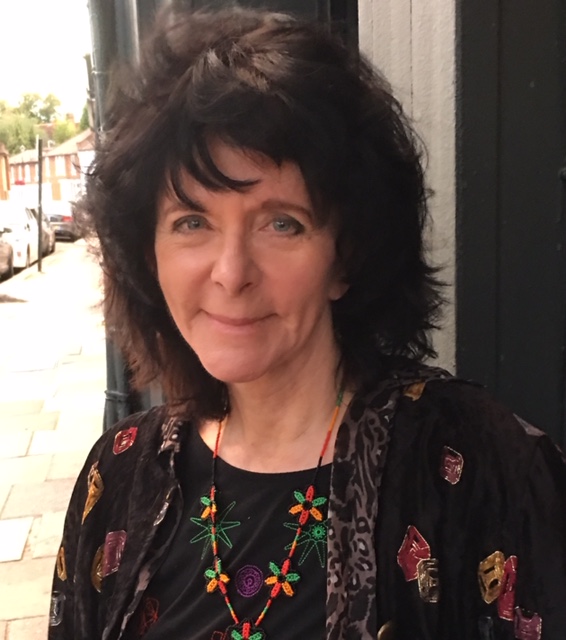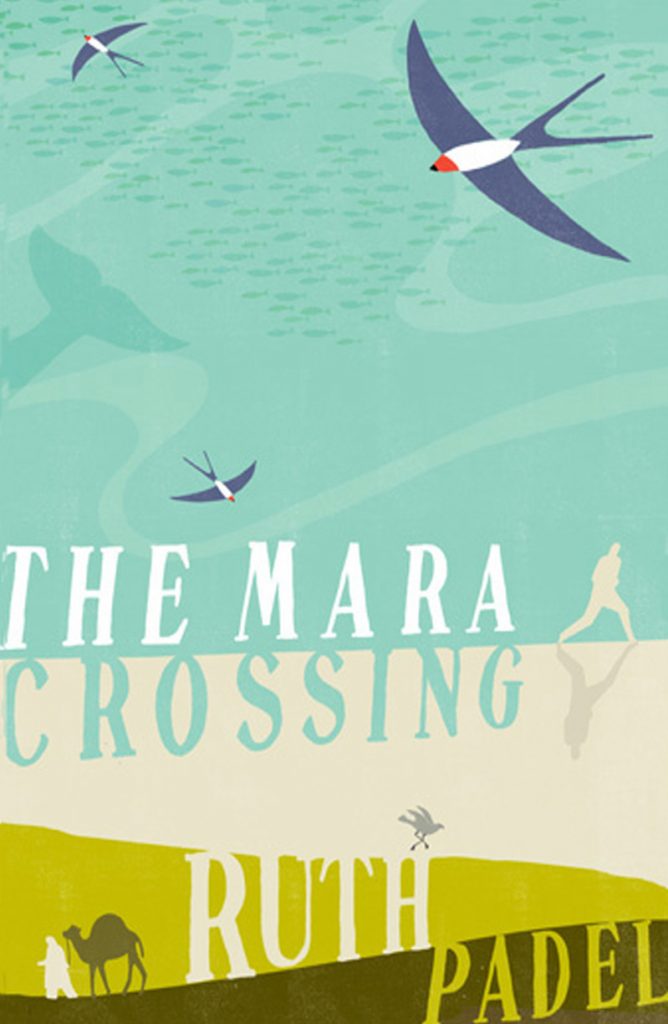
Ruth Padel
On Migration / The Mara Crossing
The theme is migration from cells to souls, trees to birds, animals to people. The climax is migration and immigration today, set in a full biological and historical context from the Holy Family’s Flight into Egypt to geese flying over Mount Everest.
The book is an exploration of migration in all its aspects, through poetry and prose. Why do animal species migrate, and why do we? These poems and short prose pieces address one of the defining movements of our era. Starting with the first living cell to appear on earth, and the spread of plants and microbes across the globe, she turns to migrations of birds and beasts with sharply drawn portraits of animals, storm petrels, jellyfish, humpback whale and lemurs as well as the human beings who studied them – who were often, like the painter-cum-birdwatcher John James Audubon, immigrants themselves. She moves on to her title migration, the epic journey of wildebeest and zebra from Kenya to Tanzania, culminating in the crossing of the crocodile-infested Mara River.
Human civilization, too, is the story of migration. From early hominids out of Africa, and the founding of Rome by refugees from Troy, to diasporas of the modern world, attempts to colonize the moon, and today’s mass migrations, detention centres and asylum-seeking, the book explores the ways in which ‘we are all from somewhere else’.
Ruth says –
‘Mara, in the title, is the name of a river in Kenya, which zebra and wildebeest cross at the end of their three-month migration. It’s not that wide, you can splash through in a few minutes, but it’s full of the biggest and hungriest crocodiles in Africa. I went there, watched many crossings, and describe them in the book. This migration and this crossing are among the most harrowing wonders of nature. But the crossing also became for me an image for the struggle in all our crossings, over sea or desert, through cultural barriers and immigration counters – and the ones we all have to make in all our lives.’
‘A quite beautiful combination of poetry and prose, a unique perspective on migration and immigration’: Read an interview on it with Ruth in The National
Read Ruth writing in The Scientist, on biological aspects of cell migration
From reviews:
‘A prodigy, a book of wonders… sheerly brilliant. Wonder connects with pity and terror, lodged in the searing penultimate section of voices in transit… coercing ‘Compassion – and beyond that, empathy’. Independent
‘This sweeping and unconventional book about migration calls for compassion. Her poems and essays are a lyrical tribute to the instincts and whims, trials and beauties that catalyse movement.’ Economist
“A thoughtful, often quite magical mix of prose and poetry… Just as fascinating as Padel’s central theme is the insight that she gives us into poetry” Independent on Sunday
‘Magnificent poems… a triumph of artistic ingenuity… – Bifurcation – between poetry and prose, human and animal, privilege and under-privilege, and, crucially, art and science – is at the heart of the collection and powers its explorations of journeying. This is a book of raw interfaces and unnerving encounters, not comfortable oppositions of black and white.’ Guardian
‘An immensely moving, beautifully written book that cannot be praised enough: an exploration of the beauty, pain, suffering and imaginative potency of migration. A book that grips you and forces you to turn the page in much the same way as any compulsive novel – and an opportunity to witness, to overhear (and have one’s own mind fired up by) a witty, wonderful intellect plumbing the phenomenon of migration and its intellectual, ethical, historical, political and aesthetic implications.’ Poetry London
‘Poetry and prose form a double helix in an engrossing meditation. All kinds of organism, from amoebas and zebras to men and women, follow the dance of love-making and leave-taking.’ Telegraph
‘An extraordinary mixture of poetry and prose… from the Holy Family’s Flight into Egypt to migrant workers in Mumbai.’ Saga Magazine
‘A richly ambitious book, and a wealth of imaginative thinking. Read it and think what a returning swallow means to human history.’ BBC Wildlife
‘I can't put this down. It starts as a personal journal, looking out onto Ruth’s beloved garden, observing the birds. She then takes you on an extraordinary journey, as if you were migrating with the birds, explaining in detail the reasons, biological, practical and genetic, for their behaviour; all in accessible, fascinating language. It does not end there - she considers the very nature of animal migration (including human) and how this has determined the world in which we live.’ Amazon Reader
